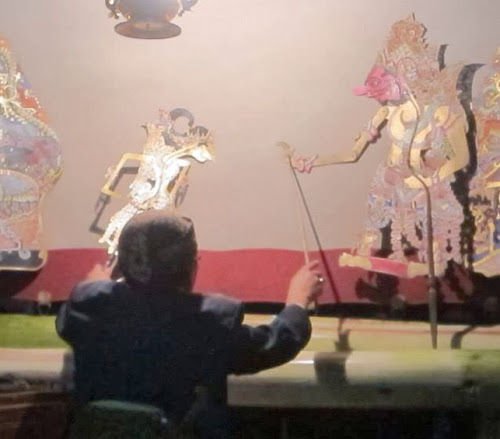Rebecca Selin, bathrooms, 05-25.01.14
In a nation where piety coexists with political corruption and formality in social interactions seems to clash with a relaxed attitude towards punctuality, it comes as no surprise that the bathrooms are a sort of microcosm of Indonesian diversity and cultural incongruities. Ok-that was kind of a joke. I wouldn't advise reading too much into the cultural significance of the variety of bathroom facilities in Indonesia, but I do think that using bathrooms was an important part of the cultural experience on this trip. Because using the bathroom is such a basic need, and can be a way to briefly take a break from stressful situations, it can be psychologically taxing to adjust to radically different bathrooms in the midst of a radically different culture. I was intrigued by the bathrooms on this trip and I want to share my enthusiasm with our blog followers!

Part of our initial debriefing session before leaving the US was a squat toilet potty training, courtesy of Mbak Jenny. So, we were prepared for squat toilets. We were not, however, prepared for the veritable cornucopia of bathroom facilities that Indonesia had to offer. To be honest, I had always harbored a curiosity for unusual bathrooms, and the prospect of using a squat toilet was definitely something I looked forward to with great anticipation leading up to this trip (which was my first time outside the US and Canada). I know this sentiment was not shared by the entire group, but we all ended up dealing with the bathrooms in our own ways.

Our first hint of unfamiliar bathrooms was at the Dubai airport, where the western sit toilets were equipped with a spray head bidet along with toilet paper. When we got to Jakarta for a layover before flying to Banda Aceh, the rich variety of toilets became immediately apparent. There were both sit and squat toilets available. I would come to understand that this bathroom binary belies the wide array of bathroom facilities that actually exists in Indonesia. Sit and squat are the basic variables, but there are other things to consider, like the type of flushing mechanism, the layout of the room or stall, and the presence or lack of toilet paper, soap, and sinks.
Hotel Medan, where we stayed in Banda Aceh, was by far our most luxurious accommodation, with mechanically flushing sit toilets, spray head bidets, and showers separate from the rest of the bathroom. Because of rickety plumbing systems, toilet paper cannot be flushed down the toilet in Indonesia, so the western style bathrooms usually featured a trash can next to the toilet. By the time we reached West Sumatra, most of our group had also experienced the more traditional variety of Indonesian WC (pronounced way say).

This standard bathroom is usually completely tiled, with a central drain, a raised platform housing the squat toilet in the back, and a large tiled basin (usually about a cubic meter or so) next to the toilet. In the basin is a scoop that is used for manually flushing the toilet as well as for splashing water for the paperless wiping process. This basin and scoop are also used for showering (several times a day--Indonesians take this very seriously). The tiles, basin, and raised platform made this type of bathroom very aesthetically appealing in my opinion. Kind of like one of those beautiful Japanese boxed lunches. Elegantly arranged.
I found it unfortunate that western toilets are seen as a status symbol in Indonesia, because the prevalence of squat toilets means that many Indonesians use sit toilets in "innovative" ways, like stepping on the seat of the toilet and squatting. Also, the water washing technique and oneness of shower and bathroom made for dripping wet toilet seats. Because of this, sit toilets were usually more uncomfortable to use than their squat counterparts. Many squat toilets were actually quite luxurious, and many sit toilets were disgusting.
Outside of the toilets, another big adjustment was the lack of soap and sinks in public restrooms. Only the most luxurious of bathrooms (and I mean really really luxurious-like the kinds of bathrooms that would have couches in the US) provided soap, so it was very useful to have hand sanitizer available at all times. This lack of soap made me (as a closet left-hander in Indonesia) more understanding of the taboo against using your dirty left hand for just about anything.
I could probably continue to write about Indonesian bathrooms for pages, but I think I'll leave it at the overview level for now. Obviously I would be delighted to talk in person or by email about anything Indonesian-bathroom-related. Taking selfies in front of bathrooms was a hobby of mine throughout the trip, so I'm including pictures of some of my favorite bathrooms from the trip.





























